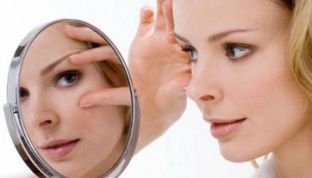
In modern cosmetology, blepharoplasty is a required operation that can change the shape of the eyelids, cut the eyelids, tighten the eyelids and eliminate many cosmetic defects in this area of the face.
The procedure involves the removal of excess oil and the skin of the eyelids. Transconjunctival blepharoplasty is especially popular, allowing you to get rid of fatty tears with minimal loss, ie without affecting the skin.
Reads
Like any cosmetic procedure, eyelid blepharoplasty has a number of indications:
- drooping eyelids (up and down);
- "fat bags" in the eye area;
- "aging" eyelid;
- ptosis of the lower corners of the eyes, resulting in changes in shape: the incision is significantly reduced;
- "heavy" eyelids (tired look).
Age-related changes The time around the eyes is marked by the fact that the skin around the eyes is very sensitive and sensitive. After 30 years, many people think that eyelid blepharoplasty is the only way to get rid of sagging and fat deposits in this area. One does not dare to take this step out of ignorance and fear. And it is completely in vain: the procedure is safe, effective and, if performed correctly, causes minimal negative consequences. You just have to get to know him better. True, there are several types of blepharoplasty, each with its own characteristics.
Views
In modern cosmetology, different types of blepharoplasty are selected.
1. Correction of upper eyelids
For many, blepharoplasty of the upper eyelids becomes a real salvation, the main purpose of which is to get rid of hanging. The operation is performed by cutting the skin along the crease of the upper eyelid. Cleanses excess skinAt the request of the patient, immediate muscle plastic surgery, excess fat can be removed.
2. Correction of lower eyelids
The most popular type is blepharoplasty of the lower eyelids, which removes edema, hernia, bags under the eyes. An almost invisible seam flows from the edge of the lashes. This operation is called transcutaneous or subcutaneous blepharoplasty by doctors. If the doctor chooses a transconjunctival procedure, an incision is made inside the eyelid. It is possible if you need to redistribute or remove the fatty tissue around the eyes, and the removal of the skin flaps is not required. This type of blepharoplasty is most commonly used by young patients.
3. Circular blepharoplasty
Circular blepharoplasty involves the simultaneous straightening of the lower and upper eyelids.
4. Laser blepharoplasty

Today, many cosmetology clinics offer an excellent alternative to eyelid surgery with laser blepharoplasty on various devices. It does not require cuts or seams. The doctor controls the depth of the laser penetration and the degree of warming of the epidermis. As a result, tissue damage and rehabilitation are minimized. The technology safely and effectively stimulates the production of new collagen and elastin, thus achieving a lifting effect. The procedure takes about 30 minutes, is easily tolerated, does not require anesthesia and does not cause hematoma. Only non-surgical blepharoplasty can boast minimal side effects.
In addition, professional cosmetologists can offer Asian eye shape correction to create a Caucasian layer. You can have plastic surgery to remove exophthalmos (the effect of swollen eyes), cantopexy (lift the lower eyelid to remove the sad expression of the eyes). The question of how safe such drastic measures to rejuvenate the eyelids is of interest to all women in need of blepharoplasty: complications are possible after almost all cosmetic procedures.
Complications
Post-procedure side effects mainly depend on the choice of eyelid surgery: complications can be early (immediately after surgery) and late.
Early complications
- Edema on the face for more than a week after blepharoplasty: blurred vision, may be accompanied by headache.
- Bleeding as a result of a small subcutaneous hematoma (blood flowing from a damaged vein collects under the epidermis) is removed by puncturing or building a vein. In this case, scars, seals, subcutaneous nodules may remain.
- Bleeding can be the result of a hematoma when a large blood vessel is damaged or blood collects behind the eyeball. This complication is accompanied by pain, swelling of the eyeball, limited mobility of the eyelid. Threatens glaucoma or temporary vision loss.
- Inverted lower eyelid, excessive "opening" of the eye, dryness. In this case, special exercises are prescribed, massage to train the circular muscles of the eye. Sometimes supporting sutures are applied and surgery is possible.
- An infection that will require a course of antibiotic therapy.
Late complications
- Separation of seams will cause re-construction.
- Sometimes spontaneous cysts form, otherwise they are removed by a specialist.
- Lacrimation due to narrowing of the lacrimal ducts.
- Unpleasant sensations of a hot eye.
- Keratoconjunctivitis is dry (simultaneous inflammation of the conjunctiva and cornea).
- Blepharoptosis (drooping of the upper eyelid).
All of the listed complications of eyelid blepharoplasty require additional therapy and repeated medical intervention. But therefore, you should not abandon a useful and important operation that restores youth. Blepharoplasty effectively and quickly solves the most painful problems: cleanses the fatty tissue and excess skin around the eyes, reduces the manifestations of age-related changes, performs plastic surgery on the muscles of this part of the face, changes the shape of the eyes, eliminates acquired and congenital eyelid defects. It is a sin not to take advantage of such an opportunity to give your eyes a second youth and radiance.





















